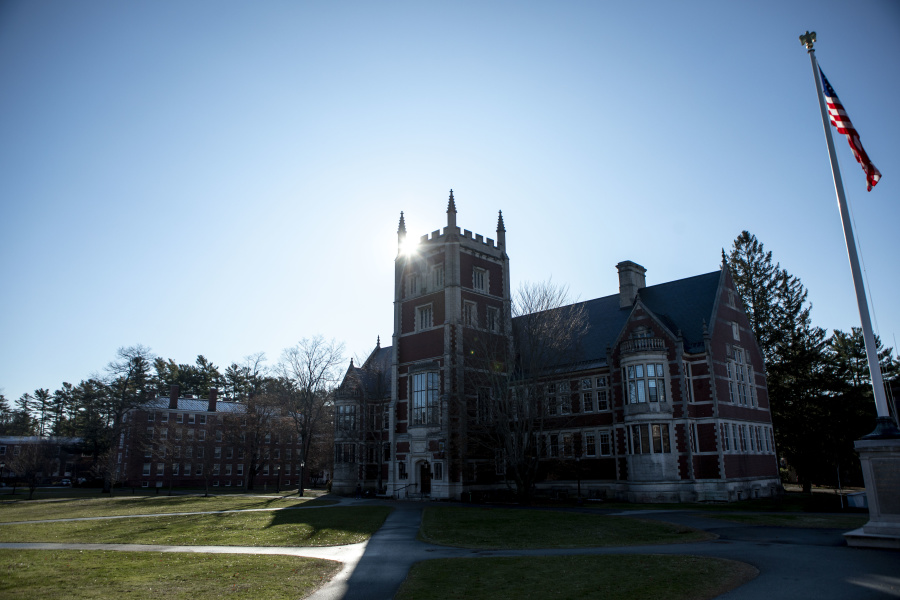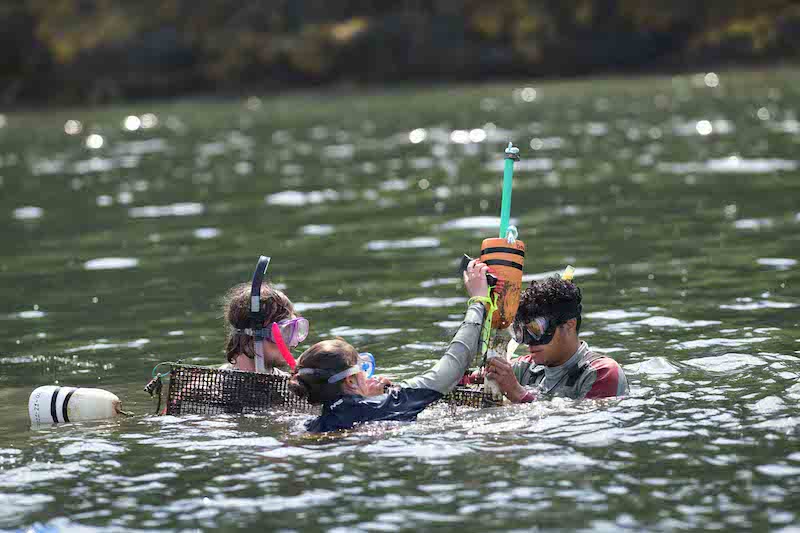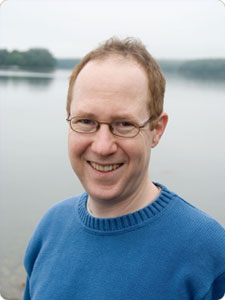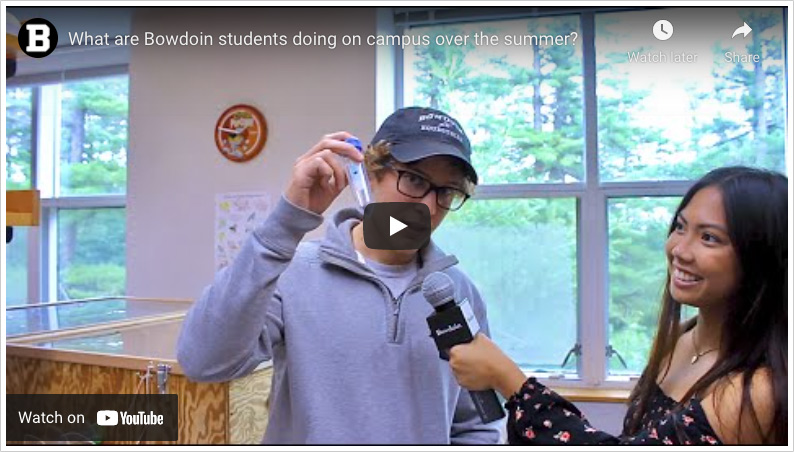Charting Changes in the Coast, from Mexico to Maine
When the Bowdoin Marine Science Semester students and faculty recently returned from hot and arid Baja California Sur and immediately headed off to a remote and chilly Maine island, it was not hard to note the difference in the two locations. But in both places the students were engaged in a effort to document and study marine ecosystems — and how they are responding to environmental changes.
Once in Maine, they traveled to the 125-acre Hurricane Island, where they stayed and worked for four days. Twelve miles from the coast of Rockland, Maine, the island is the site of a science education center run by the Hurricane Island Foundation. Nestled around the island’s boat launch are several classroom buildings, bunkhouses, sleeping cabins and bathhouses, all powered with solar energy.
This is the fourth year the Marine Science Semester has visited Hurricane Island, where it has set up two long-term intertidal research sites. One site is exposed to the Atlantic Ocean and its powerful waves and gales, and the other is more protected, sheltered in a small cove. By surveying the exact same locations year after year, the marine scientists and students can see how the shoreline is changing under the threats of climate change and ocean acidification.
Bowdoin’s Marine Science Semester is an immersive semester for undergraduates who want to study the sea. Largely conducted at the Schiller Coastal Studies Center in Harpswell, the semester-long program also includes three field trips: to Baja, Kent Island (in the Bay of Fundy), and Hurricane Island.
At each of these places, the group does an annual survey of one or two coastal sites. (In Baja, unlike in Maine, the students conduct this assessment underwater.) The long-term studies in Maine are part of a collective effort by a dozen marine research centers, Bowdoin and Bates Colleges among them, to document changes in the Gulf of Maine.
A good part of the time the Bowdoin group spent on Hurricane Island in mid-October was devoted to surveying its two sites. By doing this work, students were not only contributing valuable data to the continuing study, but they were also learning how to collect good-quality ecological data, according to David Carlon, director of the Schiller Coastal Studies Center.
“Then when they go to analyze data or they read papers based on these methods, they understand how the data has been generated,” Carlon said. “You bring it down to this small, technical scale, so when they’re actually analyzing patterns, it gives them a better understanding of what those differences mean or how to interpret them.”
At one of the Hurricane Island sites last week, it was immediately obvious to Carlon and the other program instructors on the trip — Visiting Assistant Professor of Biology Sarah Kingston and Laboratory Instructor Elizabeth Halliday Walker — that things had changed since their visit last year. The high-tide zone had shifted down, and one species of seaweed, Irish Moss (Chondrus crispus), had become more prevalent while another, Mastocarpus stellatus, had declined, possibly because the Irish Moss is more heat loving. (Watch the video above to hear more about this.)
When the students were not in the field on Hurricane Island, counting periwinkles, crabs, or algae, they were finishing a writing assignment about a scientific debate in the benthic ecology field. Or they were in class to learn how to use statistical software programming or to discuss marine populations’ community structures and recruitment patterns.
When benthic ecology expert Dave Carlon was lecturing in front of the group, he at times paused to ask the students if they remembered seeing something in the field that reflected or perhaps complicated what he was saying.
David Anderson ’19, one of the ten students in the program this fall, said that much of what he has learned so far has come from working outside or in a lab. “Dave likes to say, ‘What you have seen in the field? What have you seen that makes you say that?” Anderson said. “It’s valuable, it makes you think observationally, and it’s different than a normal class set-up.”
Another Marine Science Semester student, Charlotte Nash ’19, said that when she’s out in the field, collecting data or learning about marine life, that it never feels like work to her. “It’s just exploring,” she said.
































